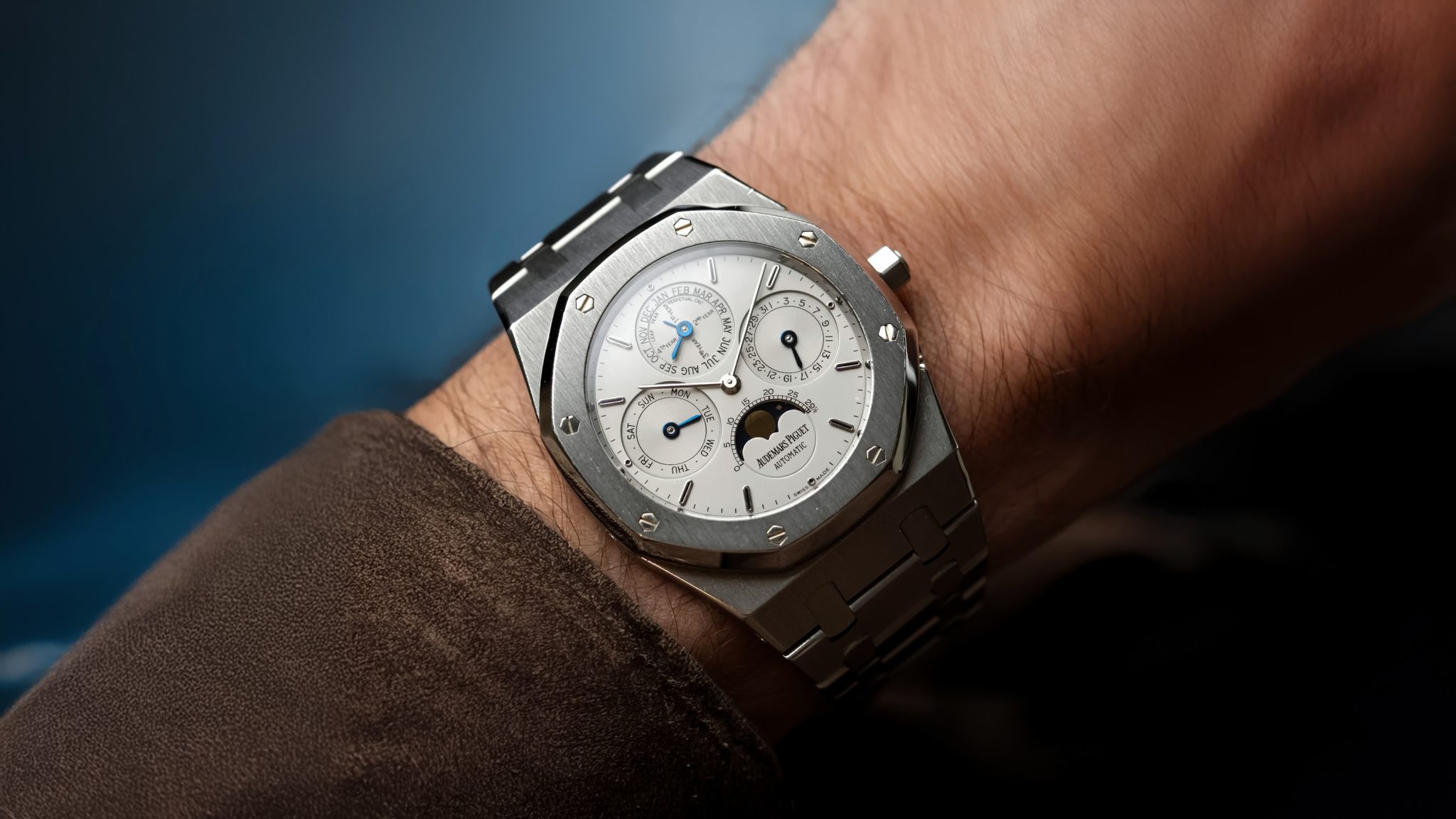
E501 Jaeger-Lecoultre Futurematic
True creativity, as in ground-up first principles approaches to problems, has immense value even when it fails spectacularly. JLC intended this, the Futurematic, to be a world-beater, the first watch without a crown to wind. The mainspring only winds from the motion of its bumper automatic, meaning those chronograph-like oversized subdials are in fact a running seconds and power reserve to ensure you’re not running on empty. Time is set by a small wheel on caseback. They sold horribly, arguably so advanced that the world wasn’t ready. However, seventy years later, they’re some of the most elegant-wearing cases out there, with a dial that is quite unlike anything else.

JLC’s reputation as the watchmaker’s watchmaker, or grande maison, was born out of brave attempts to move the industry on just like this. The Futurematic is a design that was high on the excitement of widespread automatic movements, released shortly after JLC’s first. The movement wasn’t just crownless, but featured two ingenious mechanisms to make more wearable. First, a stopwork mechanism that locks the bumper in place when the power reserve is entirely full, in order to reduce wear on bearings. Think of it as Richard Mille’s declutchable rotor 60 years earlier. Even more impressively, it has a unique mainspring design that, when the watch has stopped running, still holds 6 hours of reserve. This means that no matter what, when you pick the watch back up and wear it, the movement starts running immediately. This amount of innovation on a bumper movement hadn’t been seen before and hasn’t been seen after, with the possible exception of Moritz Grossmann’s Hamatic. It proved finnicky, fussy, and surprisingly complicated mechanically to make such a simple concept possible and usable. They’re extremely interesting watches, but not inexpensive to look after.


The Futurematic was produced from 1951 to 1958. The lifespan was so short for such a massive investment that the Futurematic nearly bankrupted JLC in the 50s. It was over-engineered to a level that makes 60s Mercedes look like Hot Wheels. This truly is as much effort as had ever gone into a movement from JLC then, but the world wasn’t ready for it. Everyone was used to winding watches to get them to run and the Futurematic had ingeniously solved problems that didn’t really need to be fixed. But it paved the way for all kinds of interesting crownless independent watchmaking we see today from Ressence, Cyril Brivet-Naudot, and even Remy Cools. And if you Google the ref. E502, which came after this E501, you’ll find the best font ever printed on a dial, with a more unique subdial design. But they’re also 5X the price of this ref, which is arguably a little more elegant. Why did all the most interesting watch designs of history have to fail? What a watch.
This example comes from mid-production and is fantastic. Quite impressive, it comes with a lot of original documentation, manuals, and even its hang tag. The case is full, with moderate surface wear. Its dial is magnificent, with a light patina and no visible damage. It comes from a well-regarded Parisian retailer.








